Ultra-luminous X-ray sources
Ultraluminous X-ray sources (ULX) are the bright sources observed in the nearby galaxies and not associated with their nuclei. For long time it was believed that these are either intermediate mass black holes or stellar-mass black holes accreting at highly super-Eddington rates. Recently, using NuSTAR observatory coherent pulsations were discovered in a ULX X-2 in the galaxy M82. By 2018, pulsations were discovered in at least four more ULX. Also similarly bright outbursts were seen from X-ray pulsars in our Galaxy and the Small Magellanic Cloud. Thus it became clear that a large fraction of ULX are in fact neutron stars with strong magnetic field. The emission from these neutron stars can exceed their Eddington limit (when radiation pressure balances gravitational attraction) by orders of magnitude. The main questions in this field are: how super-Eddington luminosities are produced, what is the geometry of the source and whether there is any beaming, how strong is the magnetic field? We have discovered strong evidence for magnetar-like magnetic fields in the first ULX-pulsar, source X-2 in M82. According to the Chandra data, the source shows strong variability in the X-ray by switching from the high to the low state different by a factor of 40 in luminosity and amazingly it does not show any intermediate state (Fig. 1). We interpreted these data as evidence for the propeller effect, when the strong magnetic field of the neutron star starts to eject accreting gas when the accretion rate drops below some limit when the magnetospheric radius exceeds the corotational radius (where the disc rotates with exactly the same angular velocity as a neutron star). The observed relation between this limiting luminosity, the pulsar period and the magnetic field allowed us to measure neutron star magnetic field, which turned out about 3×1013-1014 G, depending on the model used to relate the magnetospheric radius to the accretion rate (Chashkina et al. 2017, 2019). Understanding the nature of ULX-pulsars and the physics of accretion onto strongly magnetized neutron stars is our ultimate goal.
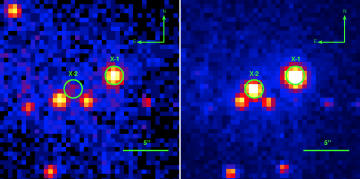
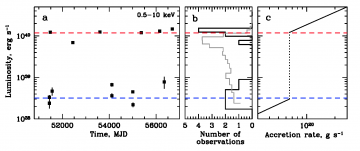
Figure 1: Top: Chandra images of the galaxy M82. The source X-2 shows two states: the dim (on the left) and the bright (on the right). Bottom: The light curve of M82 X-2 as seen by Chandra. The bimodality of the luminosities is clearly seen in the histogram shown in the middle panel with peaks at about 1040 and 3×1038 erg/s. The dependence of the X-ray luminosity on the accretion rate with the discontinuity associated with the propeller effect. From Tsygankov et al. (2016).
The models of accretion onto ULX-pulsars, and bright X-ray pulsars in general, predict the appearance of magnetically confined accretion columns and allow the accretion luminosity to be higher than the Eddington value by a factor of tens. However, the discovery of pulsations from ULX in NGC 5907 demonstrates that the accretion luminosity can exceed the Eddington value by up to a factor of 500. We show that the accretion column at extreme luminosity becomes advective. Enormous energy release within a small geometrical volume and advection result in very high temperatures at the bottom of accretion column, which demand to account for the energy losses due to neutrino emission which can be even more effective than the radiation energy losses (see Fig. 2). We show that the total luminosity at the mass accretion rates above 1021 g/s is dominated by the neutrino emission similarly to the case of core-collapse supernovae. We argue that the accretion rate measurements based on detected photon luminosity in case of bright ULXs powered by neutron stars can be largely underestimated due to intense neutrino emission. The recently discovered pulsating ULX-1 in galaxy NGC 5907 with photon luminosity of ~1041 erg/s is expected to be even brighter in neutrinos and is thus the first known Neutrino Pulsar (Mushtukov et al., 2018).
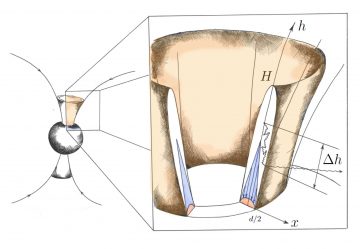
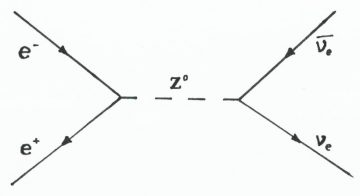
Figure 2: Scheme of advective accretion column of height H. Advection divides accretion column into a few regions: the region producing photons responsible for the X-ray luminosity (white), the region which advects photons to the base of the column without their emission from accretion column walls (blue) and the region producing neutrino emission out of energy advected from upper parts of the accretion column (orange).
Finally we attempted to answer the question how the observed luminosity from pulsating ULXs is related to the intrinsic one. A typical feature of known pulsating ULXs is a large pulsed fraction. In our work we show that the large pulsed fraction and strong amplification of luminosity exclude each other. Therefore, pulsating ULXs are not strongly beamed, and their apparent luminosity is close to the actual one (Mushtukov et al., 2021).
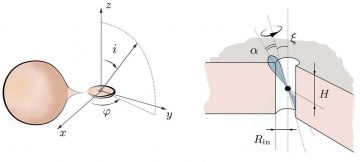
Figure 3: Schematic illustration of the considered geometry. The accretion flow from the companion star forms an accretion disc around the central object. The accretion disc plane is close to the orbital plane of the binary system. The accretion flow in the vicinity of the compact object is geometrically thick.
We have also been interested in the positions of ULX and found a statistically significant displacement between ULX and young (2–5 Myr) stellar clusters in the Antennae galaxies (Poutanen et al. 2013, see Fig. 4). This gives a strong support to the idea that ULXs are massive X-ray binaries that have been ejected in the process of formation of stellar clusters.
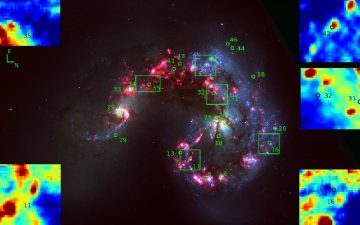
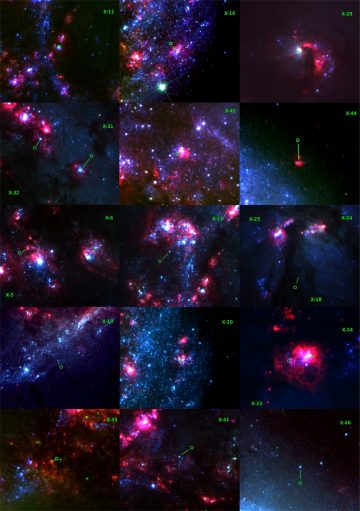
Figure 4: Left (top): Image of the Antennae galaxies. The green circles indicate X-ray positions of the ULX sources. The pink colour indicates Hα emission characteristic to young star clusters. Right (bottom): optiacal images of the environment around each ULX indicating the closest star cluster. From Poutanen et al. (2013).
We have developed super-Eddington accretion disc models onto black holes (Poutanen et al. 2007) and magnetized neutron stars (Chashkina et al. 2017, 2019), applying them to explain the ULX properties. In a series of paper by Mushtukov et al. (2015, 2018, 2021), we have studies the maximum possible luminosity achieved by an accreting neutron star, the role of neutrino emission in these sources and finally have shown that the apparent luminosty of ULX pulsars is not much different from their real luminosity (i.e. no strong beaming), because in the opposite case, pulsations would be heavily suppressed.
Selected publications:
- Bachetti M., et al. (incl. Poutanen J.),
Orbital Decay in M82 X-2,
2022, ApJ, 937, 125 - Mushtukov A.A., Portegies Zwart S., Tsygankov S.S., Nagirner D.I., Poutanen J.,
Pulsating ULXs: large pulsed fraction excludes strong beaming,
2021, MNRAS, 501, 2424-2429 - Chashkina A., Lipunova G., Abolmasov P., Poutanen J.,
Super-Eddington accretion discs with advection and outflows around magnetized neutron stars,
2019, A&A, 626, A18 - Krivonos R., Sazonov S., Tsygankov S.S., Poutanen J.,
NuSTAR observations of the ultraluminous X-ray source M33 X-8: a black hole in a very high state?
2018, MNRAS, 480, 2357-2364 - Tsygankov S.S., Doroshenko V., Mushtukov A.A., Lutovinov A.A., Poutanen J.,
On the magnetic field of the first Galactic ultraluminous X-ray pulsar Swift J0243.6+6124,
2018, MNRAS Letters, 479, L134-L138 - Mushtukov A.A., Tsygankov S.S., Suleimanov V.F., Poutanen J.,
Ultraluminous X-ray sources as neutrino pulsars
2018, MNRAS, 476, 2867-2873 - Tsygankov S.S., Doroshenko V., Lutovinov A.A., Mushtukov A.A., Poutanen J.,
SMC X-3: the closest ultraluminous X-ray source powered by a neutron star with non-dipole magnetic field,
2017, A&A, 605, A39 - Chashkina A., Abolmasov P., Poutanen J.,
Super-Eddington accretion onto a magnetized neutron star,
2017, MNRAS, 470, 2799-2813 - Tsygankov S.S., Mushtukov A.A., Suleimanov V.F., Poutanen J.,
Propeller effect in action in the ultraluminous accreting magnetar M82 X-2,
2016, MNRAS, 457, 1101-1106 - Chatterjee K., Kaaret P., Brorby M., Kajava J.J.E., Grise F., Farrell S., Poutanen J.,
Searching for X-ray sources in nearby late-type galaxies with low star formation rates,
2016, MNRAS, 456, 2966-2973 - Mushtukov A.A., Suleimanov V.F., Tsygankov S.S., Poutanen J.,
On the maximum accretion luminosity of magnetized neutron stars: connecting X-ray pulsars and ultraluminous X-ray sources,
2015, MNRAS, 454, 2539-2548 - Poutanen J., Fabrika S., Valeev A.F., Sholukhova O., Greiner J.,
On the association of the ultraluminous X-ray sources in the Antennae galaxies with young stellar clusters,
2013, MNRAS, 432, 506-519 - Medvedev A.S., Poutanen J.,
Young rotation-powered pulsars as ultra-luminous X-ray sources,
2013, MNRAS, 431, 2690-2702 - Kajava J.J.E., Poutanen J., Farrell S.A., Grise F., Kaaret P.,
Evolution of the spectral curvature in the ULX Holmberg II X-1,
2012, MNRAS, 422, 990-996 - Kajava J.J.E., Poutanen J.,
Spectral variability of ultraluminous X-ray sources,
2009, MNRAS, 398, 1450-1460 - Poutanen J., Lipunova G., Fabrika S., Butkevich A.G., Abolmasov P.,
Supercritically accreting stellar mass black holes as ultraluminous X-ray sources,
2007, MNRAS, 377, 1187-1194